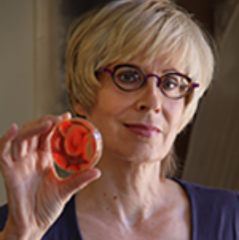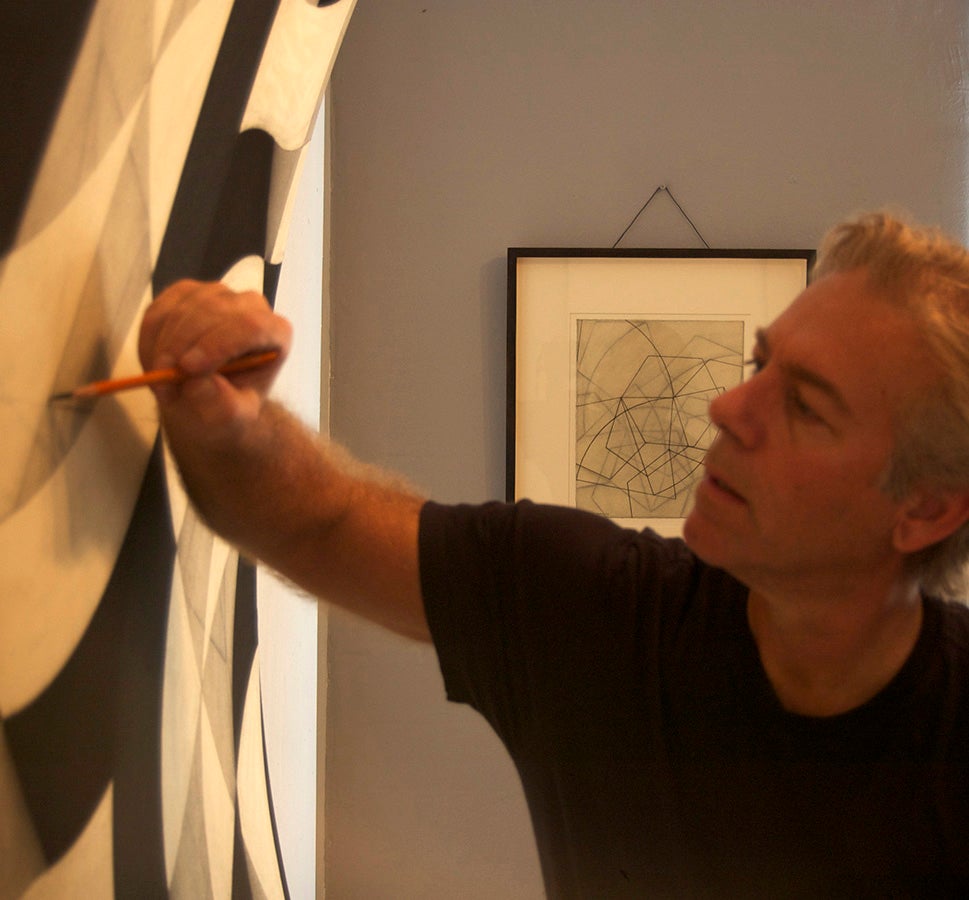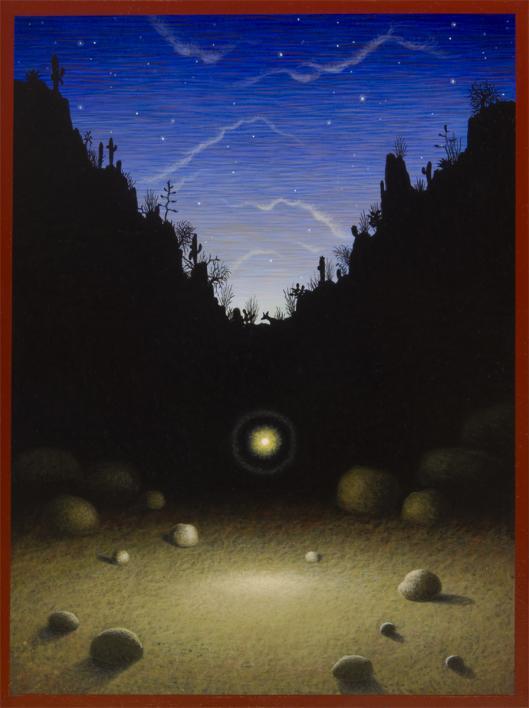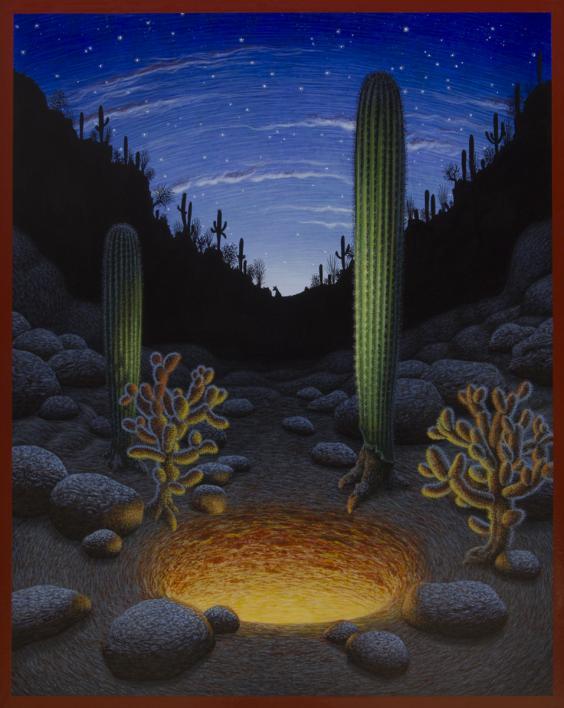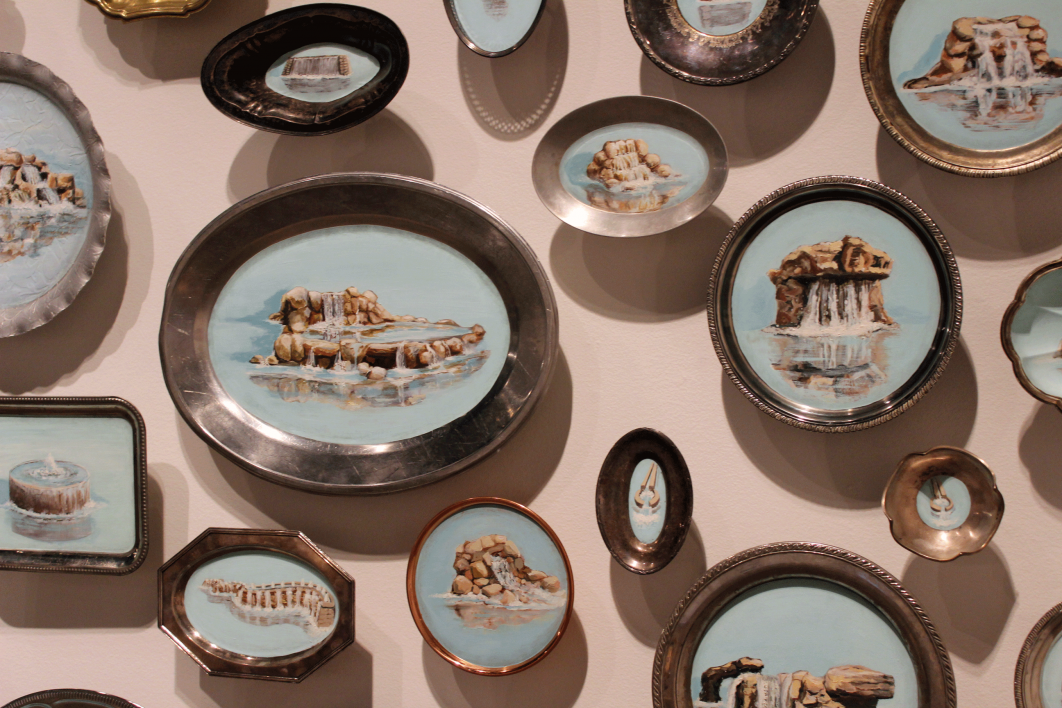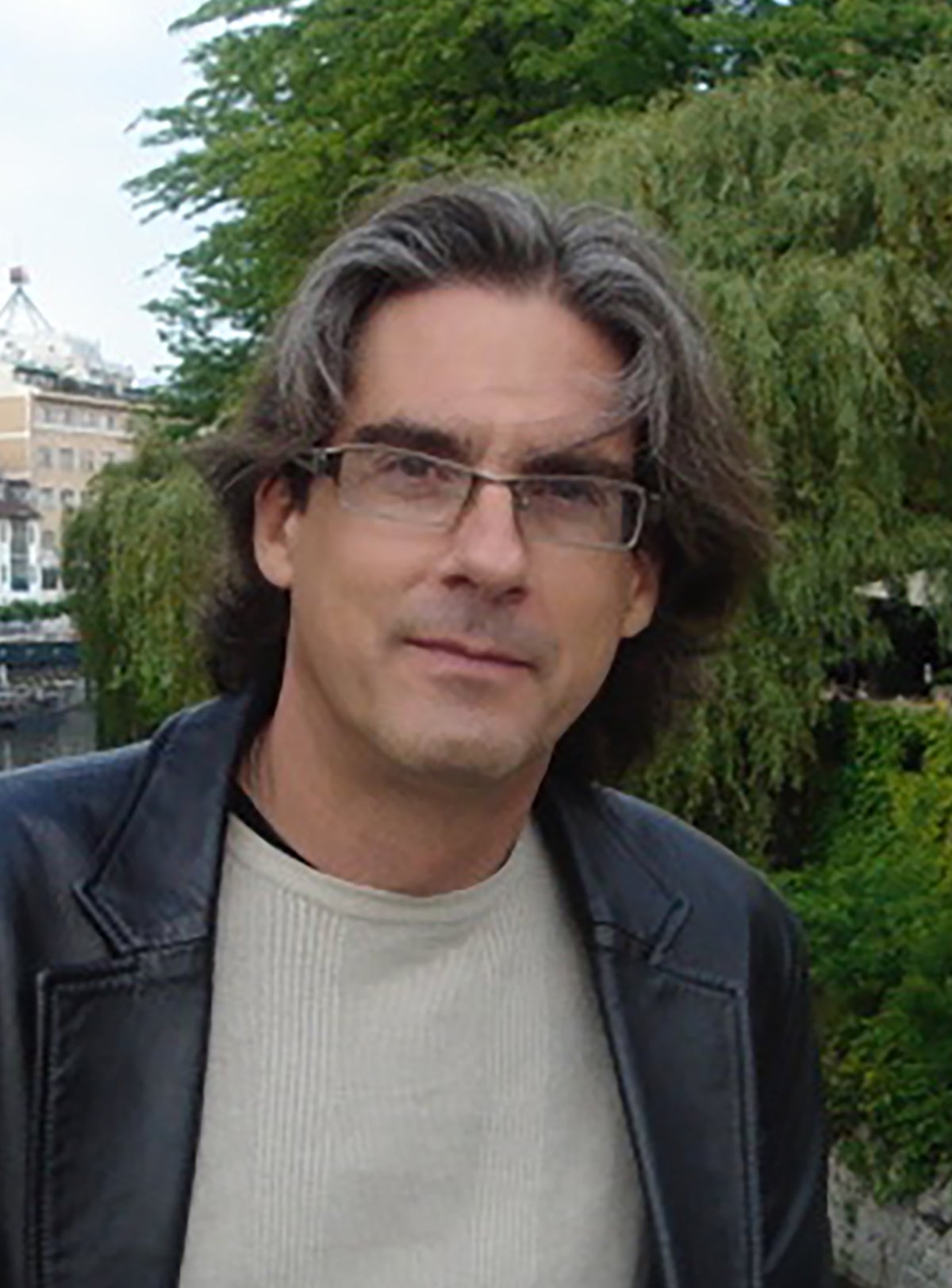Arizona Biennial exhibition features 22 Herberger faculty, students, graduates
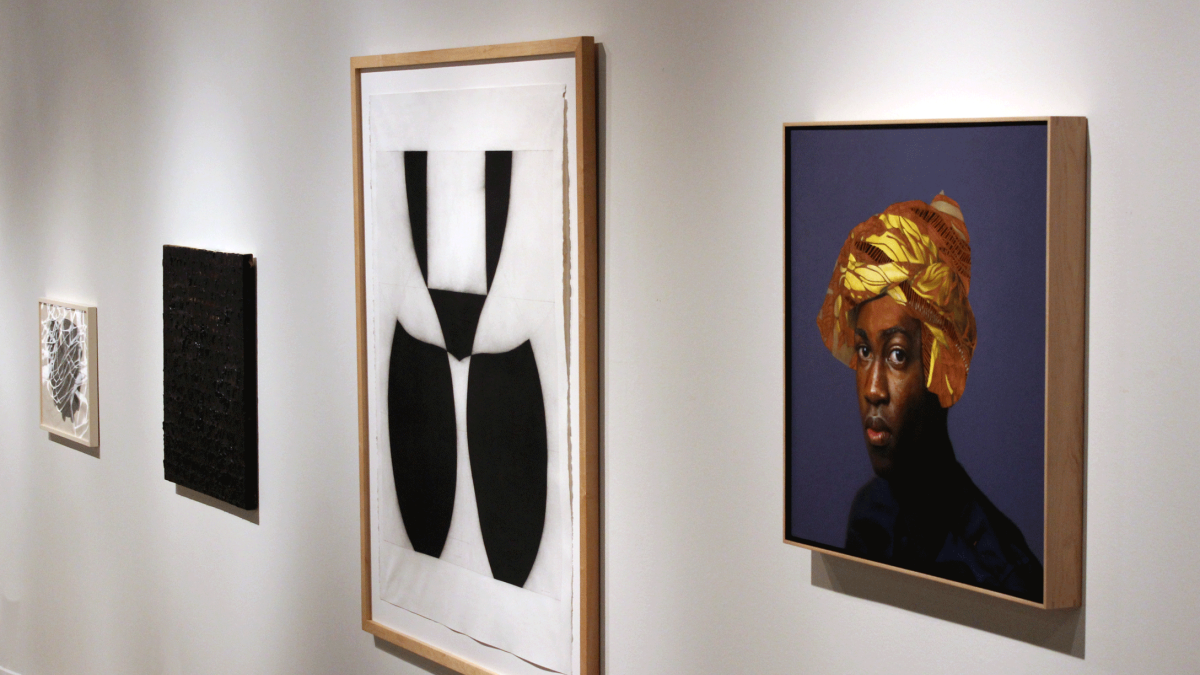
The Arizona Biennial is a celebration of the state’s artists, and this year the show includes nearly two dozen with ties to Arizona State University.
The exhibition opens Friday, July 6, at the Tucson Museum of Art, and of the 70 artists in the show, 22 are faculty, students or alumni of the School of Art in ASU’s Herberger Institute for Design and the Arts. The biennial, the oldest running statewide juried exhibition featuring exclusively Arizona artists, runs through Sept. 16.
Kathryn Maxwell, a professor of printmaking and the dean of students, has been featured in the biennial several times before and said that it’s always an honor because the works are chosen by an outside juror For this biennial, the guest juror is Rebecca R. Hart, curator of modern and contemporary art at the Denver Art Museum..
“It’s important for the population to recognize that art isn’t always created by people in Los Angeles or New York,” said Maxwell, who will have two works in the show.
“There is a very high level of creativity here.”
Maxwell is one of three faculty members who are exhibitors in the biennial. The others are Mark Pomilio and Anthony Pessler, both associate professors in the School of Art. The trio discussed how they balance teaching and their private practices.
Kathryn Maxwell
Kathryn Maxwell
Her work in the biennial: My two pieces are from the point of view of the connection between humans in the universe. We all started from stardust — literally all of our matter comes from exploding stars — and when we pass away, our matter doesn’t disappear. It becomes part of the atmosphere. They are a combination of printed mediums that are laser-cut relief prints with watercolor and india ink and screen prints.
On finding time for creativity: The internet is a blessing and a curse. I try to find times on Fridays and work from home. You do give up a lot of other things. I don’t make it to many movies or a lot of social functions. The difficulty is not having the time to let your mind wander. These two pieces were done during artist residencies, where you can go for a month and just work on your work. I challenge myself by saying, "I’m not going to censor myself even if I think this is failing." I try to get a few different things going so they can communicate with each other.
On teaching: Part of the practice of teaching in the studio arts is having critiques. We are looking at a student’s work, and the point is not to tear it down but to provide feedback on whether it’s communicating what the artist thinks it’s communicating. It’s very important for students to get used to having others see their work. Not everyone is going to be kind, and you’ll get rejected from shows. It doesn’t mean your work isn’t good.
On the interplay between teaching and practice: If you do something for a long time, even if you’re challenging yourself, you get used to certain ways of working. Sometimes students will see something that you haven’t thought about. Some of their technical failures are interesting. Graduate students often have wonderful ideas that are challenging and make you stretch what you’re thinking of.
Mark Pomilio
Mark Pomilio
His work in the biennial: It’s a large-format drawing, about 54 by 64 inches, of charcoal on paper, and it was inspired by my trip to Chengdu, China, last summer. I use geometry in my work a lot, but I was making works inspired by calligraphy and the idea that calligraphy is both text and image simultaneously. They asked me to create something with the graduate students so I took one of the small works of calligraphy I had done and rebuilt it to a giant scale. It inspired me to come home and make small studies and then do these giant ones. It has a figurative quality that is unique for my work.
On finding time for creativity: Early on, when you realize this is your passion and it’s the center of your world, you realize it isn’t an option — it’s food for the soul. This does not get easier as you get older. I would say it gets more challenging because you understand more and you understand what’s at risk. It’s not skill. It’s a conceptual concern. What are you trying to say, and how will you say it? Is it relevant? Has it been said before? Will you say it in a way that’s timely and contemporary?
On teaching: I give my students a problem in the graduate-level painting classes that’s geared to the daily practice of painting. The idea is that sometimes life gets in the way and you’re not going to have four or six hours like you have now in graduate school. But you might have an hour. What does that mean? It means you might have to change the materials you use or the motif or concept you’re working with. But if this is important, you need to find a way to work daily.
On the interplay between teaching and practice: You have to feel as if you have something to give them but they also have something to give you. I love teaching first-year students. The first four to six weeks they don’t like me at all because I’m rigid and there are a lot of rules, but then in the second half, I tell them they’ll be so excited by what they’re creating.
Anthony Pessler
Anthony Pessler
His work in the biennial: I have three pieces and they’re tiny, magical-realist paintings of the desert landscape done in egg tempera, which is a very old painting methodology in which you mix egg yolk with dried pigments. It dates back 1,500 years. They’re named after the "djinn," the Arabic word that our word "genie" comes from. They’re these sort of sprites of the desert that can be benevolent or malevolent.
On finding time for creativity: It’s not all about fun and inspiration. You have to tackle it like a job, like a plumber. You have to go the studio every day. Your inspiration will come from work, not from gazing out the window and hoping the muse will whisper in your ear. You have to have contact every day with your process and materials.
On teaching: I teach all levels of painting and drawing, and I feel like the best example is to maintain, as much as I can, my studio career. I share my work and my methodology with my students, but my primary role is to help them discover their own understanding and unique way of pursuing painting and drawing. For all of us on the faculty, our primary job is to maintain a studio career so that students see that it’s possible and that there are so many different ways to make creative practice central to one’s life and hopefully monetize it.
On the interplay between teaching and practice: There’s a feedback loop of energy that happens between my studio practice and teaching. Just being around young individuals who are really enthusiastic helps me get into the studio sometimes when I’m feeling a little unmotivated. A lot of times I’ll hear my own advice to my students echoing in my head.
Among the artists in the Arizona Biennial with Herberger ties are several current and recently graduated students, including:
• Papay Solomon, who graduated with a Bachelor of Fine Arts in May and was named the outstanding undergraduate for the spring semester by the Herberger Institute for Design and the Arts. Solomon came to Phoenix as a refugee from Africa and paints oil portraits of young immigrants.
• The Paradise Boys, a collaboration of Krista Davis, a current Master of Fine Arts student, and Lily Reeves, who earned a master’s degree in sculpture in May. Together they create installations that combine video and performance.
The Tucson Museum of Art is at 140 N. Main Ave., Tucson. For details, call 520-624-2333. Top photo: The work in the center is “Chinese Symmetries,” by Mark Pomilio. The work at the far right is "K.O.S. Knowledge of Self," by Papay Solomon. Photo by Jordan Bohannan/Tucson Museum of Art.
More Arts, humanities and education

ASU alum's humanities background led to fulfilling job with the governor's office
As a student, Arizona State University alumna Sambo Dul was a triple major in Spanish, political science and economics. After graduating, she leveraged the skills she cultivated in college —…

ASU English professor directs new Native play 'Antíkoni'
Over the last three years, Madeline Sayet toured the United States to tell her story in the autobiographical solo-performance play “Where We Belong.” Now, the clinical associate professor in…

ASU student finds connection to his family's history in dance archives
First-year graduate student Garrett Keeto was visiting the Cross-Cultural Dance Resources Collections at Arizona State University as part of a course project when he discovered something unexpected:…
